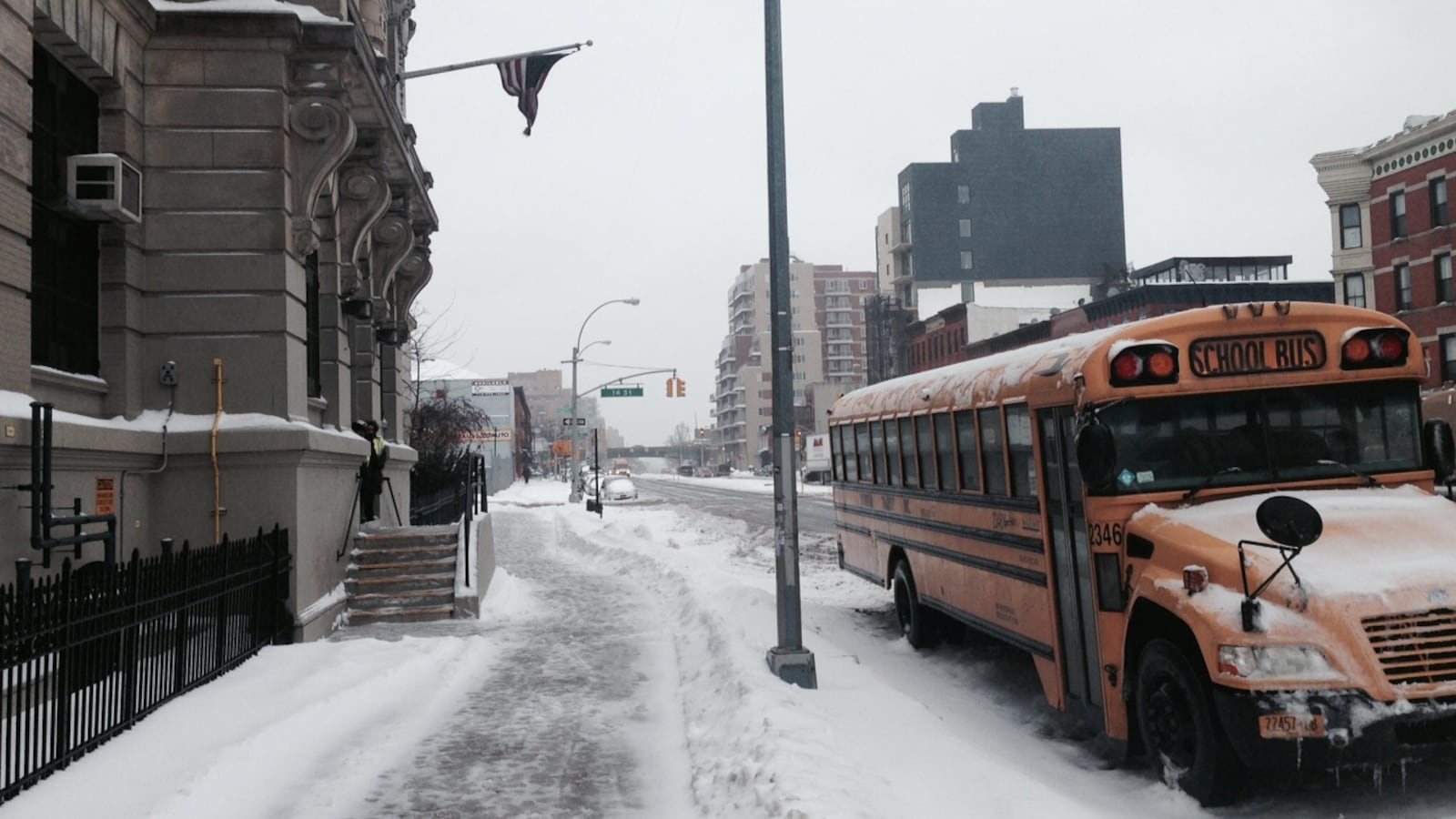Updated with today’s school attendance numbers
Mayor Bill de Blasio said the city’s decision last night to keep schools open was made with “imperfect information” about a snow storm that hammered New York City just as educators and students began their morning commutes.
At a late morning press conference to update the city about weather conditions, de Blasio said that forecasts projected “as little as three inches on the ground by the time kids walked in the door of their schools.”
“Based on our knowledge of what sanitation could do over night, we were convinced that kids could get to school this morning,” de Blasio told reporters from the Office of Emergency Management offices in Brooklyn.
Not many of those students made it to school, according to preliminary attendance figures released this afternoon. Just 44 percent of students were in school, even lower than when schools were closed in January after a storm dumped 12 inches of snow in some parts of the city and temperatures hit single digits. Average daily attendance typically hovers around 90 percent.
De Blasio ultimately defended the controversial call, which has been criticized by both the teachers and principals unions and parents who said the inclement weather made streets and sidewalks too unsafe to expect people to make it to school.
“So many families depend on their schools as a place for their kids to be during the day, a safe place, a place where they not only are taught but they get nutrition and they are safe from the elements,” de Blasio said. “So many of these families have to go to work. They do not have a choice. They need a safe option for their kids.”
But Chancellor Carmen Fariña said she might revert back to making announcements about school closures later in order to make more informed decisions. Back on Jan. 3, when 6.4 inches fell in the early morning hours, Fariña announced at 4:50 a.m. that schools were closed.
Last night’s call was made at 10:33 p.m., hours before any snow started. Fariña said she has pulled an early trigger in recent weeks so that parents would not make alternative plans in case schools were closed at the last minute.
“Might there be times that we decide not to call it the night before but to wait until the next morning?” Fariña said. “That’s one of the things we’re going to talk about and think about.”
In 2004, Mayor Bloomberg made a preemptive call before a major snow storm hit the city. But in that case, Bloomberg announced that schools would be closed and said he did it early for parents who needed to figure out what to do with their children.
“I want parents to be able to start making plans,” Bloomberg said at the time. “One of the difficulties in canceling school in our city is that parents depend on schools to take care of their kids. An awful lot of our families, the parents work, and so it really is an imposition on them in finding somebody to take care of the kids if the schools are closed.”
At the press conference, Fariña said that lateness from students and teachers would be excused. A department spokesman said student absences would be coded as “inclement weather”, but personal days would still be counted for teachers who called out.
“It has totally stopped snowing,” Fariña said. “It is absolutely a beautiful day out there,” a comment that she later clarified to mean that conditions had improved compared to earlier in the morning. Warmer temperatures turned the snow to rain and roads cleared up, but a stiff headwind and slush on the sidewalks made walking difficult.
Criticism continued to pile up from educators and parents. TV weatherman Al Roker piled on over Twitter, saying de Blasio’s comments were misleading since forecasts consistently predicted that snowfall would hit the hardest immediately before schools opened.
It’s the fourth major storm since de Blasio entered office six weeks ago in what is amounting to an unusually harsh winter for the city. De Blasio has gotten stricter since he cancelled school on Jan. 3, keeping the system open in subsequent storms.


